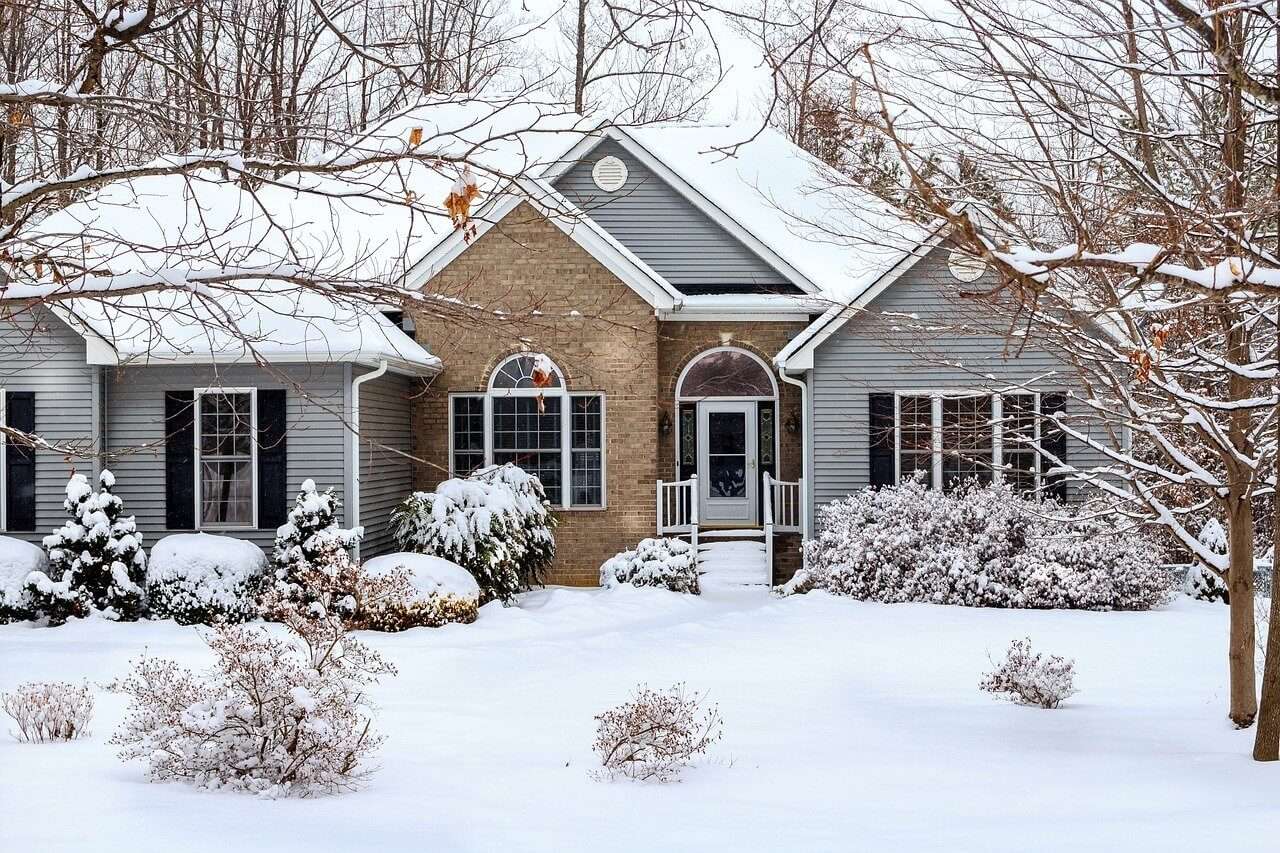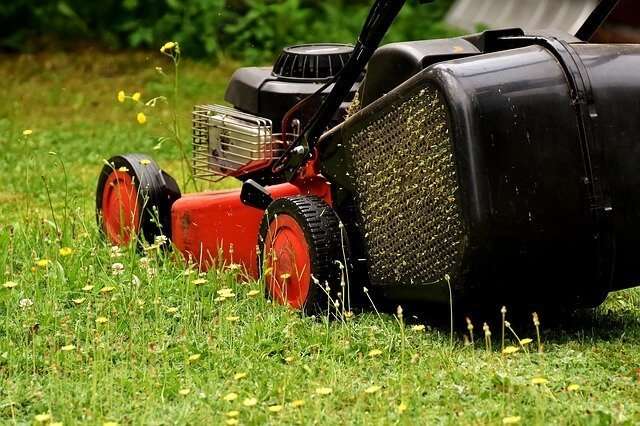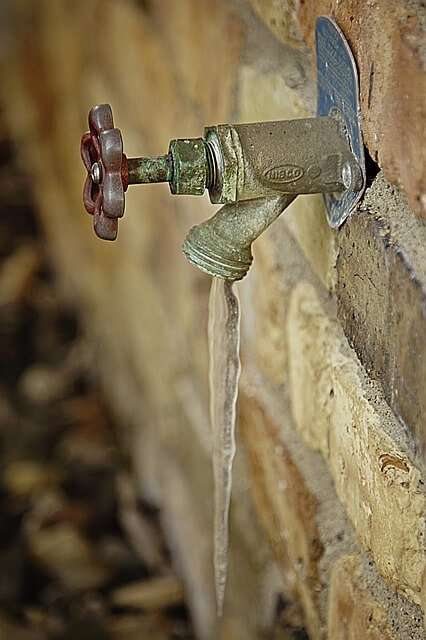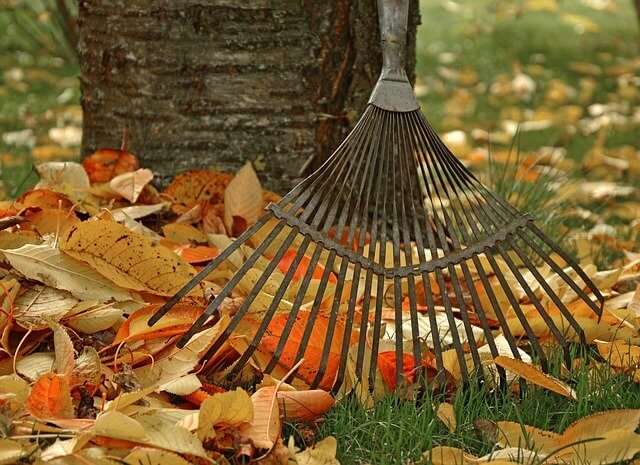Landscaping in the Winter – A Seasonal Guide.

The winter season can take a toll on your property’s landscaping and overall attractiveness. Especially if your property is located in a harsh winter zone. However, landscaping in the winter is not totally out of the picture and there are many things you can do to prepare your landscape and keep your property looking its best throughout those cold months.
Prepare your Landscape for the Winter
A little prep work during the last days of fall can make all the difference on your landscape’s appearance and your property’s overall attractiveness during the winter season.
This is particularly important if you are looking to sell or rent your property and it so happens to be winter.
Did you know that more than half of potential buyers and renters say that landscaping is a determining factor when thinking about buying or renting a home?
With even more reason, it is important to keep your property looking nice and continue landscaping in the winter.
Here is how to prep your property for the winter:
Mow the Lawn One Last Time

As you enter the last days of fall and head into the winter, it is important to mow your lawn one last time.
This last cut will be different than the regular cuts throughout the year.
It will be shorter. About 1 to 2 inches shorter.
This will protect the lawn from possible winter burn and will also prevent critters from burrowing on your lawn as they search for warmth during those months.
Fertilize your Lawn
Using a fertilizer before the temperature hits a freezing point will allow your lawn to get the nutrients it needs when it first starts getting warm in the spring and it will also give it a boost to help its growth and color when temperatures rise.
Put Down Mulch
Laying down new mulch in the fall not only restores curb appeal and brings fresh color to your flower beds and tree beds, but it also helps protect those plants, trees and shrubs from the freezing temperatures of the winter.
A 1.5 to 2-inch layer of mulch will act as a moisture sealant and insulator, which will keep the good moisture within, but also insulate the plant’s roots from the freezing snow and ice.
Cover Trees and Plants
Some of your trees and plants may be more prone to damage from the freezing temperatures, cold wind, snow and ice.
If your property is located in a harsh climate zone, the winter can dry out evergreen foliage, damage thin-barked trees, kill flower buds and damage roots.
For that reason, it is a good idea to protect trees for the winter with a white commercial tree wrap or plastic tree guards, and also cover delicate plants with burlap or special frost shields.
This will ensure you trees and plants are protected in the winter and grow nice and strong when the spring comes.
Winterize the Sprinkler System and Outdoor Faucets

As temperatures start to drop below freezing, your sprinkler system and outdoor faucets may have exposed areas that may need to be protected and insulated.
Any left-over water can cause these pipes to freeze and expand, causing them to potentially burst and leak water.
A costly repair that you may not want to deal with.
So, in order to prevent this from happening, first inspect your sprinkler systems for exposed areas and if problem areas are found, use insulated foam tubbing to easily cover those pipes.
You should also cover outdoor faucets with an insulated protector and make sure all water houses are unplugged from those faucets.
Landscaping in the Winter
Now that you know how to prep you landscaping for winter, it is time to talk about what you can do to keep your property looking great during those cold months and how you can still do some landscaping in the winter.
If you have done your prep work in the fall, you’ve already set up your landscaping for success and it only takes a few things to keep your lawn, trees and flower beds looking nicely during the winter season.
These are a few things you can do:
Continue Watering
It is important to continue watering your lawn, trees and shrubs during the winter months because, if not watered, these plants can deplete their water reserves and be more susceptible to the cold temperatures, winter burn and could eventually dry out and die.
However, it is only recommended to water if the temperature is above 40 degrees.
Watering when the temperatures are lower, could have the opposite effect and create ice that could damage your plants and sprinkler system.
Additionally, it is also important to keep watering during the winter months in order to maintain the proper moisture level for the soil around your property’s foundation.
The seasonal shifts from warm months to cold months can create unstable soil around the home if not watered accordingly. The constant movement from wet to dry soil can eventually crack your home’s foundation, causing structural damages and the need for expensive repairs.
Rake Fallen Leaves

As you know, some trees and plants lose their leaves for the fall/winter, and as more fallen leaves and branches accumulate on the ground, if left untouched, they can create a layer over the lawn that can prevent sunlight to hit certain areas of your grass.
This can lead to the grass in those areas to die or become brown, creating patches on your lawn and making it look unattractive.
Some people think that fallen leaves can work as a sort of fertilizer, and to some point, that is true. However, large layers of fallen leaves, as they decompose, can also create an environment susceptible to mold and fungus which can be detrimental to the health of your lawn and overall appearance.
Use the Right Deicer
If your property is located in a zone prone to large amounts of ice and snow, you may be using deicers to clear sidewalks, driveways and entryways.
Deicing these areas not only create a safe environment for you, tenants and visitors, but it can also prevent from the possibility of a lawsuit due to a slip-and-fall injury.
However, some of these deicers, especially salt-based ones, can be harmful to trees, shrubs and grass if they come in contact with the plant, because they can be absorbed and they can draw water away from the plant, drying it out and potentially killing it.
Because of that, it is important to be careful and use the correct application rates for these products. Follow the product’s guidelines and also avoid over-using them.
Know your Zone
Lastly, if you are thinking about landscaping in the winter, it is important to know the plant hardiness zone your property is located in.
Since different plants withstand different climates, you should review which plants are recommended for your zone and try to plant trees, shrubs and flowers that do well in your particular climate.
You can learn your property’s zone by reviewing the USDA’s Plant Hardiness Zone Map
Related Articles
How Often Should you Clean your Carpet?
Learn how often you should be cleaning your carpet with this easy-to-follow schedule. Plus, learn our awesome homemade carpet cleaner recipe to get the job done.
How to Clean an AC Unit and Maintain your HVAC
Learn how to clean an AC unit and properly maintain your property’s HVAC in order to keep it working properly and reduce energy costs.
How to Flush your Hot Water Heater. Complete Guide.
In this article, we go over how to flush your hot water heater and explain a few water heater maintenance tips you can easily do to keep your water heater running smoothly.
This is Property Management by You!
Are you ready to take control? Check out our software features.
About our company
We are a property management software company inspired by the need to serve rental property owners and managers, with a better, easy-to-use and more affordable way of managing their properties.
© 2025 ALL RIGHTS RESERVED BY PROPERTYCTRL.COM





0 Comments